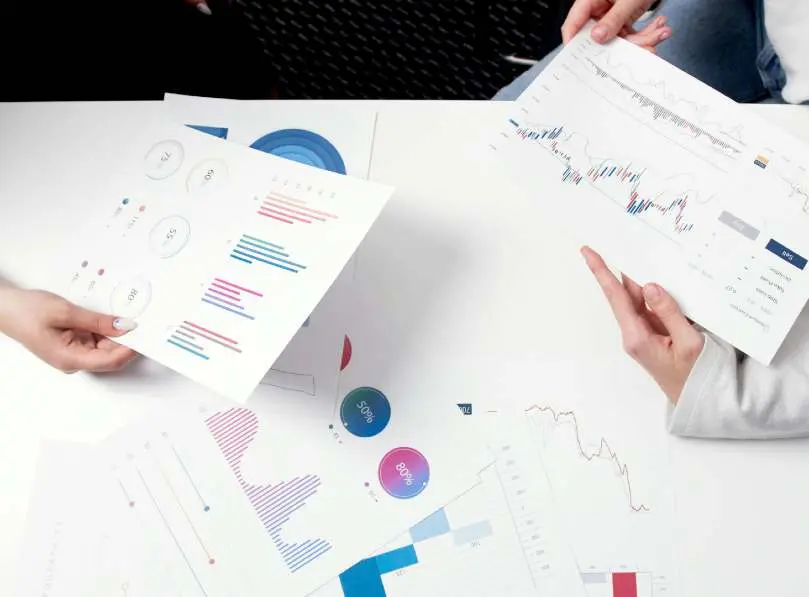Mean vs Median: Understanding the Difference

When summarizing and describing a set of numbers, there are two key concepts that are good to know: the mean and the median. While they may sound similar, the mean and median are two distinct measures of central tendency that provide different insights.
Unveil what the mean and median are, how to calculate them, and when to use one over the other. Discover the examples that cement the differences between these two important statistical values. Read on to have a solid understanding of mean vs. median and when to use each.

Defining Mean and Median
Mean and median are two of the most commonly used measures of central tendency. The mean is the arithmetic average. To find the mean, add up all the values in a data set and divide them by the number of values. The median, on the other hand, is the middle value in an ordered data set. Half of the values are below the median and half of them are above.
The mean and median, while related, can provide different indications about data, depending on whether the data is symmetrical or skewed and what aspect of the data is most important to capture. Understanding both is crucial for gaining valuable insights from the data.
Calculating the Mean vs. Median
To calculate the mean, add up all the numbers in the data set and divide by the number of values. When arranging the values in order, the median represents the middle number in the data set.
- Finding the Mean
To calculate the mean, find the sum of all values and divide them by the number of values. For example, the mean of 2, 3, 4, 7 and 9 is (2 + 3 + 4 + 7 + 9) / 5 = 25 / 5 = 5. Extremely high or low values, known as outliers, often affect the mean.
- Finding the Median
To determine the median, arrange the numbers in order and pick the middle value. If there are an even number of values, calculate the mean of the two middle numbers. For example, the median of 2, 3, 4, 7 and 9 is 4. The median of 2, 3, 4, 7, 9 and 12 is (4 + 7) / 2 = 5.5.
- Using the Mean vs. Median
The mean and median provide different perspectives on the data. Some prefer the mean when calculating the average of all values or when outliers do not impact the data. Conversely, others opt for the median when aiming to establish a midpoint that reduces the impact of outliers.
Knowing how to calculate and apply the mean and median will allow individuals to gain useful insights from the data. With a little practice, determining these statistical measures can become second nature!
When to Use Mean vs. Median
When trying to determine a typical value for a data set, it is vital to choose between mean and median.
- Use the mean when you want to consider every value.
The mean considers the values of all members of a data set when determining a typical value. This makes the mean sensitive to outliers, which are values that notably differ from the rest of the data. The mean is a good measure of central tendency when a data set has no outliers. For example, to calculate the average test score for a class, it is best to use the mean.
- Use the median when there are outliers.
Outliers do not influence the median since it only considers the middle value. It provides a more accurate typical value when a data set contains outliers. For example, when determining the typical price of a home in a neighborhood, individuals must use the median sale price. This approach helps reduce the impact of high or low sale prices that can skew the mean.
- Consider the shape of the data distribution.
The shape of a data distribution also factors into the choice between mean and median. For symmetrical distributions like the normal distribution, the mean and median will be close to the same. For skewed distributions, the mean and median can differ significantly. In these cases, the median is usually a more typical measure of central tendency. The long tail of the distribution does not influence it.
Briefly, outliers and the shape of the data distribution may impact the mean and median. It is crucial to choose the one that will provide the most useful and accurate reflection of a typical value. This depends on the specific data set. With a balanced analysis of these factors, an individual can choose the best measure of center to answer their question.
Conclusion
While both the mean and median measure central tendency, they calculate the "middle" of a data set in different ways. The mean is the arithmetic average, calculated by adding up all the values and dividing them by the number of data points. For data arranged in order, the median is the middle value. Both give useful insights but can yield different results based on the shape of the distribution and the presence of outliers.
The takeaway? Know when to use each, and do not just rely on the mean alone to understand the data. Applying both allows for a more complete picture.
Insights You Need to Get It Right







